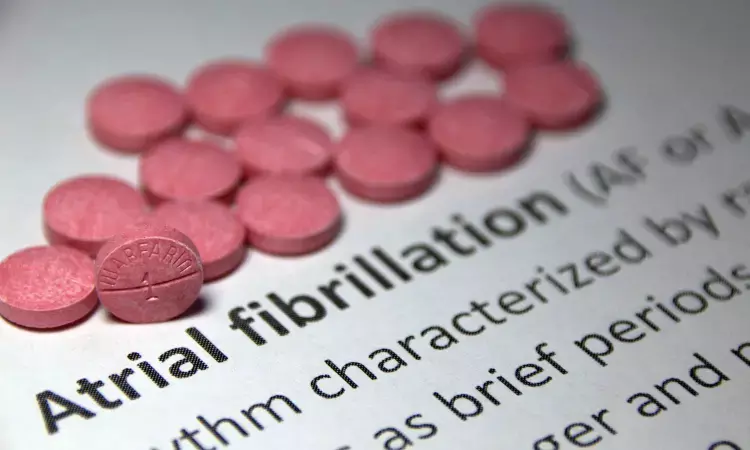- Home
- Medical news & Guidelines
- Anesthesiology
- Cardiology and CTVS
- Critical Care
- Dentistry
- Dermatology
- Diabetes and Endocrinology
- ENT
- Gastroenterology
- Medicine
- Nephrology
- Neurology
- Obstretics-Gynaecology
- Oncology
- Ophthalmology
- Orthopaedics
- Pediatrics-Neonatology
- Psychiatry
- Pulmonology
- Radiology
- Surgery
- Urology
- Laboratory Medicine
- Diet
- Nursing
- Paramedical
- Physiotherapy
- Health news
- Fact Check
- Bone Health Fact Check
- Brain Health Fact Check
- Cancer Related Fact Check
- Child Care Fact Check
- Dental and oral health fact check
- Diabetes and metabolic health fact check
- Diet and Nutrition Fact Check
- Eye and ENT Care Fact Check
- Fitness fact check
- Gut health fact check
- Heart health fact check
- Kidney health fact check
- Medical education fact check
- Men's health fact check
- Respiratory fact check
- Skin and hair care fact check
- Vaccine and Immunization fact check
- Women's health fact check
- AYUSH
- State News
- Andaman and Nicobar Islands
- Andhra Pradesh
- Arunachal Pradesh
- Assam
- Bihar
- Chandigarh
- Chattisgarh
- Dadra and Nagar Haveli
- Daman and Diu
- Delhi
- Goa
- Gujarat
- Haryana
- Himachal Pradesh
- Jammu & Kashmir
- Jharkhand
- Karnataka
- Kerala
- Ladakh
- Lakshadweep
- Madhya Pradesh
- Maharashtra
- Manipur
- Meghalaya
- Mizoram
- Nagaland
- Odisha
- Puducherry
- Punjab
- Rajasthan
- Sikkim
- Tamil Nadu
- Telangana
- Tripura
- Uttar Pradesh
- Uttrakhand
- West Bengal
- Medical Education
- Industry
Amiodarone use in AF patients increases bleeding risk in patients on apixaban or rivaroxaban

USA: Using amiodarone in patients aged 65 years or older with atrial fibrillation during apixaban or rivaroxaban (anticoagulants) raises the risk for bleeding-related hospitalizations versus those treated with sotalol or flecainide, a recent study published in Annals Of Internal Medicine has shown. Amiodarone is a potent antiarrhythmic drug widely used to manage atrial fibrillation.
The study, which compared the risk of bleeding-related hospitalizations in patients receiving amiodarone versus those receiving flecainide or sotalol, aimed to shed light on the interaction between these antiarrhythmic drugs and anticoagulants. Amiodarone was chosen as the focus due to its well-known inhibitory effect on eliminating apixaban and rivaroxaban, potentially leading to elevated anticoagulant levels and increased bleeding risk.
The researcher Wayne A. Ray and the team of the Department of Health Policy, Vanderbilt University School of Medicine, Nashville, Tennessee, conducted a retrospective cohort study. They analyzed data from a large group of patients with atrial fibrillation who initiated anticoagulant therapy between January 2012 and November 2018. The patients have subsequently been prescribed either amiodarone or the control antiarrhythmic drugs flecainide or sotalol. The primary outcome measured was the occurrence of bleeding-related hospitalizations, while secondary outcomes included ischemic stroke, systemic embolism, and death with or without recent evidence of bleeding.
The findings of the study were:
● A total of 91,590 patients were included in the study, with a mean age of 76.3 years and 52.5% being female.
● Among them, 54,977 patients initiated treatment with amiodarone, while 36,613 patients received flecainide or sotalol.
● The use of amiodarone was associated with an increased risk of bleeding-related hospitalizations, with a rate difference of 17.5 events per 1000 person-years and a hazard ratio of 1.44 (95% CI, 1.27 to 1.63).
● There was no significant increase in the incidence of ischemic stroke or systemic embolism (rate difference, -2.1 events per 1000 person-years; hazard ratio, 0.80; 95% CI, 0.62 to 1.03).
● The risk of death with recent evidence of bleeding was higher than that for other causes of death, with a rate difference of 9.1 events per 1000 person-years and a hazard ratio of 1.66 (95% CI, 1.35 to 2.03).
● The increased incidence of bleeding-related hospitalizations was greater for patients receiving rivaroxaban (rate difference, 28.0 events per 1000 person-years) compared to those receiving apixaban (rate difference, 9.1 events per 1000 person-years) (P = 0.001).
The study also highlighted a greater risk of death with recent evidence of bleeding in the amiodarone group compared to other causes of death. Furthermore, when comparing the two anticoagulants, rivaroxaban was associated with a higher incidence of bleeding-related hospitalizations than apixaban.
These findings emphasize the need for careful consideration and individualized treatment decisions when prescribing anticoagulant therapy to atrial fibrillation patients receiving amiodarone. Healthcare providers should be vigilant in monitoring patients for signs of bleeding and weigh the potential benefits against the increased bleeding risk associated with this drug combination. Further research is warranted to validate these findings and explore potential strategies to mitigate the bleeding risks in these patients.
Reference:
Ray, W. A., Chung, C. P., Stein, C. M., Smalley, W., Zimmerman, E., Dupont, W. D., Hung, A. M., Daugherty, J. R., Dickson, A. L., & Murray, K. T. (2023). Risk for bleeding-related hospitalizations during use of amiodarone with apixaban or rivaroxaban in patients with atrial fibrillation : A retrospective cohort study: A retrospective cohort study. Annals of Internal Medicine. https://doi.org/10.7326/M22-3238
Dr Kamal Kant Kohli-MBBS, DTCD- a chest specialist with more than 30 years of practice and a flair for writing clinical articles, Dr Kamal Kant Kohli joined Medical Dialogues as a Chief Editor of Medical News. Besides writing articles, as an editor, he proofreads and verifies all the medical content published on Medical Dialogues including those coming from journals, studies,medical conferences,guidelines etc. Email: drkohli@medicaldialogues.in. Contact no. 011-43720751


